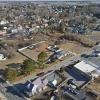The Delaware Department of Agriculture recently announced the latest round of selections for its Aglands Preservation Program, which is adding more than 5,300 acres from 60 farms statewide into a program that permanently protects land from development. The latest round includes 3,653 acres from 40 farms in Sussex County. The program has permanently preserved more than 151,000 acres statewide since 1996, including 61,000 acres from 547 Sussex County farms.
In Sussex, 21.7% of farmland has been preserved over the last 27 years. While the state does not purchase the land, it acquires an easement, essentially buying the development rights to the property.
With development creeping farther west, this program remains critical to the state and county, ensuring the state’s No. 1 industry remains intact while also providing some relief to nearby residents who may fear increased traffic on secondary roads and the effect of residential housing on the environment.
The state also has a Forestland Preservation Program. Jimmy Kroon of the Delaware Department of Agriculture said most land that qualifies for the Forestland Preservation Program also qualifies for the Aglands program, since there is more flexibility. He notes that forest areas included in an Agland easement can be cleared to create cropland, but it doesn’t happen very often, and it remains protected from development.
The Forestland program is allowed to spend up to $1 million of the Aglands program’s $10 million budget, but, Kroon said, there haven’t been enough offers in recent years to spend the entire amount. Unspent funds go back to the Aglands program.
The state also has Young Farmer Loan easements that offer 30-year, no-interest loans to help young farmers purchase farmland with the stipulation that the land is preserved in perpetuity.
Combining all three programs, the state has preserved 18,500 acres of forest in Sussex County, including 958 forested acres in the latest round.
While more work needs to be done at the county level to better protect wooded areas, specifically properties with mature trees, it’s nice to know the state has set aside money to protect these areas. Although $10 million is significant, more money needs to be invested to ensure farms and forests are not lost to development.





















































